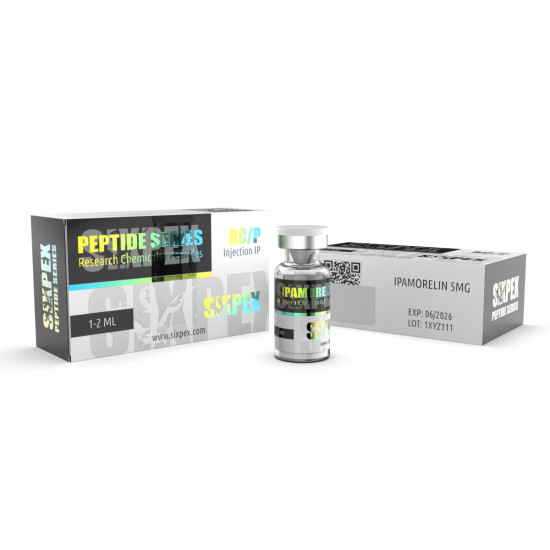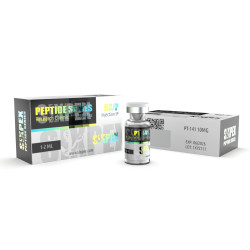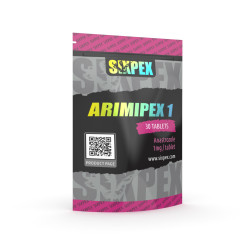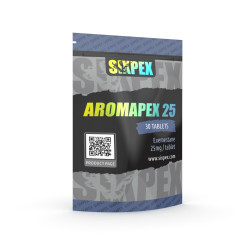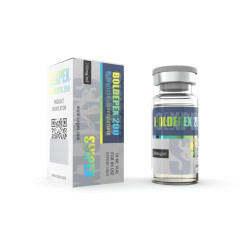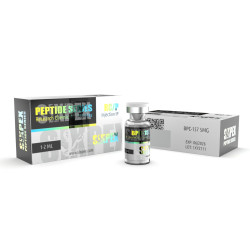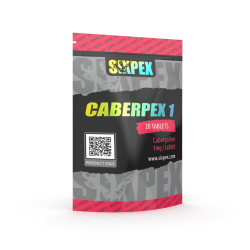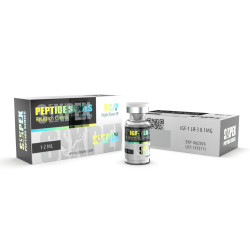The Comprehensive Guide to Ipamorelin: Usage, Effects, and Side Effects
1. Introduction to Ipamorelin
Ipamorelin is the newest and purest form of growth hormone stimulators. Ipamorelin is a peptide, something quite different from the amino acids you are most likely used to working with. Growth hormone is a hormone that affects a lot of things negatively, including strength, performance, and aging. The best part of Ipamorelin is that it will not tire out your pituitary gland, and it can work very well even when it is used in very small doses. This is not just another HGH treatment. Ipamorelin does not release a lot of the chemicals that can cause certain side effects, and it can release a huge amount of the 'good' chemicals, including GH and IGF-1. This makes this treatment a much more unique and effective treatment than anything else on the market. Ipamorelin is a very exciting peptide as it can not only be used on its own for some great anti-aging, but it is also one of the safest peptides out there. Peptides are quickly increasing in importance in the world of medicine. These tiny versions of proteins are revered by physicians and fitness enthusiasts due to their potential as fat burners, muscle bulking agents, and overall health aids. Among these, Ipamorelin—a five-amino acid chain peptide—has been climbing in use, with promises to alleviate pain, balance cholesterol, and more. Given the growing awareness of its benefits, many people have begun to seek information about how this peptide is used and the side effects that are associated with it. This guide provides information about the nature of Ipamorelin, the effects and benefits of using it, and the potential side effects that may come with it. The content of this guide is intended to be a comprehensive guide for all of those who are interested, including bodybuilders, athletes, hypoglycemics or those with low blood sugar, middle-aged men experiencing a mid-life crisis, or anyone tired of unnecessary weight gain, irritability, or symptoms of aging.
1.1. What is Ipamorelin?
In straightforward terms, Ipamorelin is a medium-sized synthetic peptide. It is a growth hormone secretagogue and was discovered in the 1990s. Growth hormone secretagogues or GHS consist of a broad group of synthetic compounds and natural peptides. They function in a way that is similar to most hypothalamic hormones or releasing factors, which means that they bind to a hypothalamic receptor and therefore send signals to the pituitary gland, stimulating the release of a particular hormone in this region. The release of growth hormone, in particular, is required for a variety of complex regulatory actions.
Ipamorelin is classified within the large classification of peptides as a GHRP-1. It has a selective release of growth hormone. In this respect, it differs markedly from various first-generation growth hormone secretagogues, including the GHRP-2 and the GHRP-6. Increasing the level of growth hormone production is only one of the many activities that the body does when these peptides are released. Moreover, Ipamorelin provides a host of unique benefits, some of the most pronounced of which include increased bone mineral density, muscle mass, energy production, and a decrease in inflammation and pain reduction, among numerous others. It shares these effects in many ways which, when compared to the first-generation peptides of GHRP-2 or GHRP-6 groups, give it certain key advantages. For these reasons, Ipamorelin has assumed relevance not just as a significant medication available for research or becoming a clinically approved medication, but also in the areas of bodybuilding and anti-aging.
1.2. Mechanism of Action
Despite the relative simplicity of Ipamorelin's structure, its mechanism of action is highly complex and is still being investigated. It is now known that Ipamorelin interacts with the pituitary ghrelin binding receptor, which is distinct from the receptor to which ghrelin itself binds. The importance of this interaction is unknown; however, Ipamorelin causes an increase in the level of growth hormone.
The activation of the ghrelin receptor type-1a produces many of the same effects as ghrelin. Decades of research have shown beyond a doubt that the administration of large doses of ghrelin is followed by increases in appetite, growth hormone, glucose, and prolactin. Metabolically, items are absorbed into cells at a faster pace, and mitochondria are activated, increasing their production of ATP. Also, cellular uptake of calcium increases significantly. Some of these effects are downstream effects of activation of other receptors in the body, such as the growth hormone-releasing hormone receptor. When GHRP-2 is first injected, appetite is greatly stimulated, and the rate of growth hormone secretion initially increases. Despite this, Ipamorelin's effects are notably different. Studies comparing ghrelin and Ipamorelin together are still lacking. Nevertheless, this difference in receptor activation may account for the appetite-stimulating effects of ghrelin, which have not been reported from Ipamorelin.
2. Clinical Uses of Ipamorelin
As with other peptides, there are other uses of Ipamorelin, but there has not been significant research conducted into other applications.
Clinical Uses of Ipamorelin
As stated, the main clinical use for Ipamorelin is in the treatment of patients with a growth hormone deficiency. Growth hormone deficiency occurs when the pituitary gland either does not produce enough growth hormone or does not produce any at all. Ipamorelin can help these patients reach normal GH levels, which play an important role in overall well-being. In addition, since it has been shown to help with muscle repair, it may also be beneficial for those who are injured and need help recovering. For the most part, it is used for this benefit as part of a multimodal treatment program that includes physiotherapy and other exercises.
Moreover, as a peptide used for muscle growth, it can be of benefit in the elderly. Many in this age group have a difficult time maintaining and repairing muscle. This loss is partly due to a decrease in the production of growth hormone. In early clinical trials, trying to find a dosage that was both effective and safe, researchers found that even the lowest dose was enough to release a significant amount of growth hormone. Data showed that Ipamorelin released a significant amount of growth hormone immediately. This information confirmed early studies showing that intravenous administration of Ipamorelin released GH and release was dose-dependent.
2.1. Growth Hormone Deficiency
Ipamorelin is a peptide that, by stimulating the release of growth hormone, significantly increases the concentration and production of endogenous growth hormone. Ipamorelin is an attractive therapy for growth hormone deficiency, where exogenous growth hormone has been the standard of care. Growth hormone deficiency in children can result in short stature and growth failure. In adults, the clinical presentation of growth hormone deficiency can include a low energy level, decreased quality of life, and changes in muscle mass, bone density, and body fat distribution. Children may present with growth failure, while adults may present with decreased muscle mass and a change in body composition as well as emotional instability. Adults may have a decreased sense of well-being and quality of life. When growth hormone is administered to adults deficient in this hormone, fat mass decreases and lean body mass increases are reported. Ipamorelin is approved for use in adults with growth hormone deficiency. Growth hormone is also known to support many aspects of cardiovascular health, including lowering total cholesterol, body fat mass, and improving fitness levels. Since the use of Ipamorelin, changes in the symptoms of older patients have been observed. The current recommendations for the treatment of growth hormone in the US are followed. Despite the benefits of these treatments, the use of hormones externally presents risks. The size and effects of these risks are still controversial but potentially problematic. Patients must undergo routine tests and remain under medical supervision while receiving these treatments. The primary purpose of the treatment is to address growth hormone deficiencies to bring the patient to hormone levels within the normal range found in humans.
2.2. Muscle Growth and Repair
Ipamorelin has received considerable attention for its appeal in growing muscle and repairing it following periods where stress, surgery, or injury led to a catabolic state. The natural growth hormone (GH) Ipamorelin triggers muscle protein synthesis, which can peak within 24–36 hours and last up to 72 hours. That’s a pretty lovely scenario for those looking to improve and streamline their recovery, I think. Ipamorelin directly prompts anabolic activity. Unlike other GH-heavy peptides from the same family, which can replace earlier GH pulses but may increase subsequent downstream GH pulses resulting from the feedback loop, Ipamorelin does not raise GH pulses and is chosen by other GH levels or feedback loops. Even at peak times, this allows users to benefit from optimal GH release.
That’s why athletes, bodybuilders, and other people are into it. Ipamorelin has seen use in sports medicine when considering everything from use in rehabilitation programs after sports injuries to growth therapy that stimulates natural GH release. In some sports, this peptide continues to make headlines. Athletes may find that muscle strength and mass gains increase with consistent use of Ipamorelin in conjunction with other sports rehabilitation techniques. It’s been shown to increase IGF-1 levels by up to 20 percent. As for dosing, Ipamorelin’s proposed doses range from 200–300 mcg/day. This therapy is said to last 12 weeks before cycling off to reap the full benefits, and faster healing has been reported with a 14-week therapy program. This would have to be repeated at least once a year because athletes need a topical TUE in order to use it.
3. Effects of Ipamorelin
The Positive Effects of Ipamorelin
One of the most remarkable effects of peptide therapy is the increase in growth hormone levels in the blood. Ipamorelin is one of the peptides that are especially powerful in this respect. The rise in the level of growth hormones is accompanied by a large number of positive effects that are partly associated with the physiological boost. Currently, the most frequently reported effect is the improved insulin sensitivity and stabilized blood glucose levels. In terms of body composition, the decrease in fat mass and increase in muscle mass are often mentioned; however, the extent of this effect is frequently underestimated because only the effect of the growth hormone is usually taken into account. The growth hormone is actually responsible for a large part of the anabolic effect of testosterone. Therefore, the effect of Ipamorelin on muscle strength and endurance can be impressive, especially in combination with an androgen. This peptide also boosts the production of insulin-like growth factor 1. This process takes longer than the release of growth hormone and is therefore difficult to measure by means of a blood test. Large-scale studies do not exist since publications about Ipamorelin have only started over the last few years. However, in practice, we are seeing increasingly better results when patients are using Ipamorelin.
Some impressive results are also seen when studies focus on the dose-dependent increase in strength, usually referred to as dose-dependent toxicity. A strong increase in muscle mass was seen with extremely large doses. This is an interesting finding from a recreational point of view. In practice, this means that little disadvantage is associated with higher doses because the required dose is reached quickly. Data are also available about the fat recovery potential of Ipamorelin. It was a study with obese women that shows that Ipamorelin causes a higher drop in fat mass than in weight. The weight of the women decreased by an average of 4.5 kg after 15 weeks, but the fat mass had already decreased by 6.3 kg. This means that there had been an increase in muscle mass of 1.8 kg at the same time.
3.1. Increased Growth Hormone Levels
Ipamorelin administration increases the secretion of growth hormone (GH) in healthy subjects, healthy elderly, and adults with GH deficiency via the pituitary. In a healthy state, the secretion of GH occurs in a pulsatile manner, occurring in large amounts at night and usually in smaller amounts during the day. The elevation in GH levels triggers several physiological effects, one of the most notable being the insulin-suppressive actions and lipolytic properties of the hormone. The result of moderate increases in GH levels is the maintenance of good health and body composition; perhaps one of the most profound effects is its capacity to stimulate growth in children and aid in the recovery of aged individuals in any given attributes. The overall outcome is the expenditure of energy and the depletion of energy stores to fulfill the requirement of these greater energy needs, resulting in weight loss. Generally, larger than normal pulses of GH secretion lead to increased production of Insulin Growth Factor-1 (IGF-1). In the absence of carbohydrate intake and while the four-hour fat burning window is present, greater levels of body fat will be lost. Many studies conducted over mandatory weeks of Ipamorelin administration showed an increase in GH-induced IGF-1 production when compared to a placebo group. Increasing GH levels in the body have also been shown to improve the rate of recovery in healthy adults. Greater levels of GH in the body may lead to increased protein synthesis, an accelerated recovery time, and greater performance. However, Ipamorelin's potential anti-inhibitory effect of somatostatin is able to influence joints in a positive manner, enabling users who supplement with Ipamorelin to experience lower levels of joint-related injuries, fatigue, pain, and accelerated recovery. Ipamorelin directly increases the release of GH in the presence of higher levels of insulin production.
3.2. Improved Muscle Mass and Strength
Dramatically enhanced anabolic activity—owing to its extraordinary boosts to growth hormone levels—Ipamorelin effectively facilitates and accelerates muscle growth and recovery from exercise. As part of enhancing body composition, many Ipamorelin users experience significant increases in muscle mass and strength. The considerable involvement of athletes and fitness enthusiasts as users of Ipamorelin underscores its effectiveness as a performance-enhancing agent. Muscle mass, dynamics, and functionality are integral to improving long-term workout outcomes, particularly with respect to power, endurance, and resistance. The consumers indigenous to these subcultures are often best equipped to offer objective results from Ipamorelin usage on diverse aspects of musculoskeletal fitness. Over a longer period of use, it has been reported that treatment with Ipamorelin, in conjunction with androgen replacement therapy, might lead to fuller hypertrophic responses if the subject has blood serum growth hormone markers within high normal or supra-physiologically expanded levels. The effects of this would include more minutes in muscle tissue for satellite cell maintenance, superior anabolic signaling, additional options for neural innervation, increased sarcoplasmic, Z-disc, and thick and thin filamentous count, and a more complete body response over time.
Muscle hypertrophy, the expansion and multiplication of muscle fibers, is the terminal result of an array of events that occur in muscle cells in response to an opposing load leading to muscle tension. At the heart of the process, termed hypertrophic-induced muscle remodeling, is an upregulation of muscle protein synthesis. Muscle protein synthesis is the manufacturing process where new proteins are generated in muscle fiber cells, and hypertrophy is directly related to the net muscle protein balance: subtraction of muscle protein breakdown from production. Multiplied by the years of training, anabolic promoting drugs, and a proper diet, net muscle protein balance changes with a particular population's subjects after workout, and the serum levels of growth factors increase steadily over 24-72 hours across the high-normal growth hormone, insulin-like growth factor 1, and androgens. Although considerable scientific evidence and short-term studies only share an anecdotal pool of evidence, the effectiveness of Ipamorelin in the treatment of catabolic states that lead to muscle wasting is noted. Long-term studies experimenting with anabolic-catabolic hormones are necessary to draw definitive conclusions about their stated activity.
4. Side Effects of Ipamorelin
When considering any drug, it is always a good idea to be aware of the potential side effects to be expected, so you can make an informed decision about exactly what you’re getting yourself into. Our goal in this bit is to be completely unbiased: we want to give you an accurate picture of the costs and benefits of using Ipamorelin.
Common Adverse Reactions The peptide is well-tolerated by healthy individuals. At a dose of 200 mcg per day, only a minority of peptide users experienced a ‘flushing’ feeling in response to the peptide, several hours post-dose. The sensation is similar to what people often report when eating certain food additives. The symptom ceases as the body becomes adapted to the peptide, commonly within two weeks of use. If the dose is reduced below 200 mcg, symptoms resolve even more quickly, although of course, this will diminish the efficacy of the compound.
Rare Side Effects Rare but serious adverse reactions, such as anaphylaxis or transduction of an extant cancer by mutated sermorelin, theoretically could be caused by the drug. To our knowledge, anaphylaxis hasn’t occurred in patients treated with this peptide. However, do keep in mind that we do possess some data to show that serum levels of the growth factor are not increased to a large extent when using very large doses of the drug. As a systemic therapy, this is further evidence for a relatively benign side effect profile being linked to the drug. This growth factor is known to be associated with cancer cell growth. For persons with a history of cancer or other serious disease, it may be prudent to have a set of baseline blood tests done before and after first using this peptide, to verify that it has not exacerbated the disease. Although we do not personally believe that Ipamorelin is likely to be associated with severe colonization of serum and anaphylaxis, any potentially doping or carcinogenic therapy should be administered by a licensed healthcare provider in an appropriate medical setting. Additionally, let the healthcare provider be aware of any personal or family histories of cancer or other contraindicated conditions.
4.1. Potential Adverse Reactions
It is important to note that many people respond favorably to treatment with Ipamorelin, but a subset may develop adverse reactions to the treatment. Possible adverse reactions include short-term, transient side effects to the medication as well as potential long-term detrimental side effects. In general, it is suggested that individuals take the lowest dose of Ipamorelin possible that yields a desirable clinical response in order to minimize potential adverse effects. Common transient side effects of Ipamorelin may arise within the first few days of initiating the medication but typically resolve shortly after. At the injection site, some users may experience irritation, pain, redness, discoloration, swelling, or an itchy sensation. This skin irritation will likely be minor. Along with local irritation, some tissues within the head may become swollen or cause pain, specifically the oropharyngeal and palatal areas. Some users may develop transient headaches, but this side effect is less commonly reported. The orolabial edema and oropharyngeal transient side effects confer themselves to an expected side effect of those taking Ipamorelin during the first few days of treatment. Therefore, therapy should be initiated while the individual is at home and can monitor themselves in a safe environment to ensure there are no serious side effects. The oral mucosa swelling and sore throat typically resolve within a couple of days post initiation of therapy. Any new or worsened headaches reported by an individual during the first few days of initiation of Ipamorelin therapy should resolve within a week of initiation of treatment; if not, the individual should report this to their physician. Additionally, while taking Ipamorelin, many users may experience a change or loss of taste, which is usually seen as a bitter or metallic taste and typically resolves a few days post treatment. Given the recommended duration of Ipamorelin therapy (ideally less than 8 weeks), this side effect would likely not have time to develop into a chronic complication. A transient hypesthesia of the anterior tongue and other oropharyngeal mucosa may develop within the first few days of treatment with Ipamorelin and more commonly resolves within 7 days.
4.2. Safety Considerations
The use of Ipamorelin requires supervision by a licensed health care professional. If you are interested in trying Ipamorelin, you should seek a medical consultation or a prescription to receive this peptide. Your individual dose of Ipamorelin should be administered by a licensed health care professional who will assess your progress and help determine an appropriate dosage and follow-up timing for monitoring. Receiving these peptides without consulting a medical professional is not advised, as it could compromise the safety or effectiveness of the treatment.
Ipamorelin and similar peptides should be used with caution and oversight by a medical professional in certain groups of patients or individuals, including: people with serious traumas, people with acute and chronic diseases, people over 65 years of age, and people who are pregnant or breastfeeding. Sterile handling of injectable Ipamorelin components and correct and hygienic administration of the injections are important to ensure sterility and to prevent injection administration errors. The substance should not be injected if it appears cloudy, is discolored, or contains particles. Dispensing of this material is often controlled and administered by a major health care facility, which means you are able to receive correct guidance and oversight from health care professionals. Be sure to read the instructions for administration and discuss any questions or concerns with a primary care provider or pharmacist before using Ipamorelin. The type of prescriber and prescriber qualifications can vary by country. Some countries allow people to receive health care services online, while other countries have stricter laws surrounding the use of prescription peptides. Whether you buy it online or at a pharmacy, this peptide is legal if prescribed and managed by a licensed doctor in your jurisdiction. If the legal status of any drug, including Ipamorelin in your location, is unclear to you, check with your doctor.
5. Conclusion
The use of Ipamorelin has the potential to be incredibly beneficial in a variety of biological avenues. Whether or not it will wind up being a comprehensive and popular peptide throughout the two spheres of usage is yet to be completely established. It has been shown to stimulate muscle growth and reduce the release of cortisol, and the several other hormones and growth factors it can increase might also have potential clinical applications. It could also have a potential use as a test for certain types of hormone regulation. It is also worth noting its physiological use at the hypothalamus as a GH inductor. In general, it is important to come into the process of using peptides and dependent compounds and substances.
Whether coming at it from a scientific standpoint with a comprehensive understanding of the potential risks, or coming from a lifestyle perspective that just wants to avoid spending money on ineffective or side-effect ridden products, it is always important to take a good hard look at these compounds. They have the potential to supplement the body to an unhealthy degree. It is necessary to first take a look into these areas, but the potential treatment aspects could develop in the future. Many of the clinical and supplementation uses of Ipamorelin have already been investigated but much more could yet be studied to substantially expand the current knowledge we have as a species. Therapeutic peptides could give a renaissance to people’s approaches to illnesses and abandoning such interesting and potent fields would be an enormous mistake.
Up to this point we have discussed many of the aspects of using Ipamorelin in a variety of contexts. There is no questioning the fact that when it comes to peptides it holds enormous potential to be developed further in the future, but it is the side effects that currently hold the most relevant importance to those that might be considering using the compound. To have any real form of slashed growth releasing hormone output would be dreadful for the vast majority, especially when not all of Ipamorelin’s particular issues have been fully researched at length in the science community. In all honesty, it’s difficult to say at this point. There are several indications for which Ipamorelin could be useful, both in wellness and performance as well as clinical settings. It is uncertain at this moment if we would consider Ipamorelin to be one of the top performing peptides for these areas at the current time, but this may certainly change in the future as more data becomes available and the market grows. We need to closely follow this peptide in the coming years of scientific study and in the current research location of the performance and wellness worlds alike. Overall, we should certainly come to expect that Ipamorelin could truly gain a considerable amount of following in the peptide near future.

